
Theater lovers rejoice. There’s one more reason to head to New York City to get your fix, even if Patti LuPone has quit Broadway. The Museum of Broadway has officially raised the curtain, offering a winding, multi-level catacomb of installations, memorabilia, and interactive exhibits. And as you might expect, it’s super queer.
The collaborative effort — led by co-founders Julie Boardman and Diane Nicoletti — includes contributions, among others, from Playbill, Broadway Cares/Equity Fights AIDS, the New York Public Library for the Performing Arts, and The Al Hirschfeld Foundation, resulting in highlights from more than 500 individual productions from the 1700s through the present.
The 26,000-square-foot space, steps from Times Square, spans four floors and includes a breadth of historical information and show-specific exhibits from classics like Oklahoma! and West Side Story to contemporary hits like Wicked and Hamilton. Visitors also get a sense of behind-the-scenes elements necessary to pull off a big-budget production with “The Making of a Broadway Show” exhibit.
How about we take this to the next level?
Our newsletter is like a refreshing cocktail (or mocktail) of LGBTQ+ entertainment and pop culture, served up with a side of eye-candy.

The museum will also program special exhibits, beginning with “The American Theatre as seen by Hirschfeld,” featuring nine decades of the iconic illustrator’s work from 1928 to 2002. In addition, a new app developed for the museum enables visitors to “Hirschfeld” themselves to create a personalized digital illustration.
Of course, no museum visit is complete without a gift shop. The Museum of Broadway begins and ends in its retail space, featuring swag from your favorite Broadway shows, a modest book collection, and some random soon-to-be collectibles like a Grizabella T-shirt from CATS.

“Keep it happy, keep it snappy, keep it gay!”
It’s no secret that the LGBTQ community has been central to Broadway’s evolution. The Museum of Broadway commemorates queer theatrical legends throughout. Museum highlights include:
“I am what I am”
Before there was RuPaul’s Drag Race, there was La Cage aux Folles. Inspired by Jean Poiret’s play of the same name, this queer tribute to love and family brought together Jerry Herman (music and lyrics) and Harvey Fierstein, along with plenty of feather boas and tap-dancing drag queens.
“You do not live in America. No such place exists.”
Artist Kelsey Montague, known for her interactive street art, was commissioned to create a work for the Museum of Broadway honoring Tony Kushner’s Angels in America. The two-part play (Millennium Approaches and Perestroika), subtitled A Gay Fantasia on National Themes, explores the crushing impact of the AIDS epidemic through an other-worldly lens, intersecting fictional characters with real-life historical figures, including Roy Cohen. The plays won a total of seven Tony Awards.
The red ribbon
Now synonymous with HIV/AIDS awareness, the red ribbon was created in 1991 by the Visual AIDS Artists’ Caucus. As part of the logo for Broadway Cares/Equity Fights AIDS, the ribbon has become a powerful identifier in the theater community. Featuring wall art by Debbie Millman and a ribbon installation by HOTxTEA, the AIDS Epidemic exhibit gives pause for visitors to acknowledge the ongoing impact of HIV/AIDS in the arts and beyond.

“Dance ten, looks three”
Dancers Michon Peacock and Tony Stevens gathered a small group to discuss the challenges of being a professional dancer. Director-choreographer Michael Bennett was soon brought in, and with Marvin Hamlisch (music) and Ed Kleban (lyrics), transformed their narratives into one of the longest-running musicals of all time.
“Seasons of love”
Jonathan Larson’s Rent, which loosely reimagines the opera La Bohème in 1980s New York City, ran for more than 5,000 performances and helped launch the careers of Idina Menzel, Anthony Rapp, Wilson Cruz, and many more.
Modern master
Dozens of queer theater artists can be found woven throughout the museum, but none has quite the impact as the legendary Stephen Sondheim. His contributions appear throughout, from early collaborations on West Side Story and Gypsy to later works, including Company, Follies, Sweeney Todd, and Sunday in the Park with George. As theatergoers eagerly await Jonathan Groff’s return to the stage in the Off-Broadway revival of Merrily We Roll Along, Sondheim’s indelible presence can now always be accessed at the Museum of Broadway.
The Museum of Broadway is located at 145 West 45th Street, New York City.
Correction: An earlier version of the article stated that La Cage aux Folles was inspired by The Birdcage. The musical was based on Jean Poiret’s 1973 French farce of the same name.

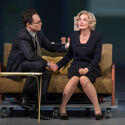







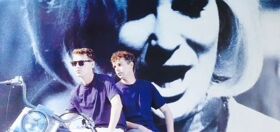


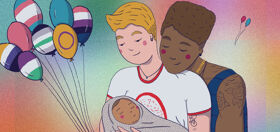


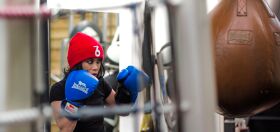

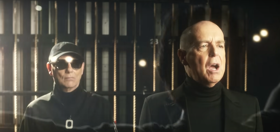


inbama
If I’m reading this correctly, you wouldn’t even be able to take a minor to “Les Ballets Trockadero de Monte Carlo” or a performance of “La Cage Aux Folles” – in Texas, anyway.
Who could’ve imagined such a brilliant idea like Drag Queen Story Hour would’ve provided ammunition to our enemies?
mailliw110
Still having fun in the confessional?
Flamingo Falls
As a self-avowed theater queen, I would love to visit the museum. That said, “La Cage Aux Folles” was not inspired by “The Birdcage.” It was inspired by the 1973 French film, “La Cage Aux Folles,” and the 1983 musical, in turn, inspired “The Birdcage,” which came out in 1996.
inrehearsal
As cited in the article, ” La Cage aux Folles. Inspired by Jean Poiret’s play of the same name,” the musical was based on the play which was adapted into the French film several years before the American version. Wexler does not state the musical was based on The Birdcage.